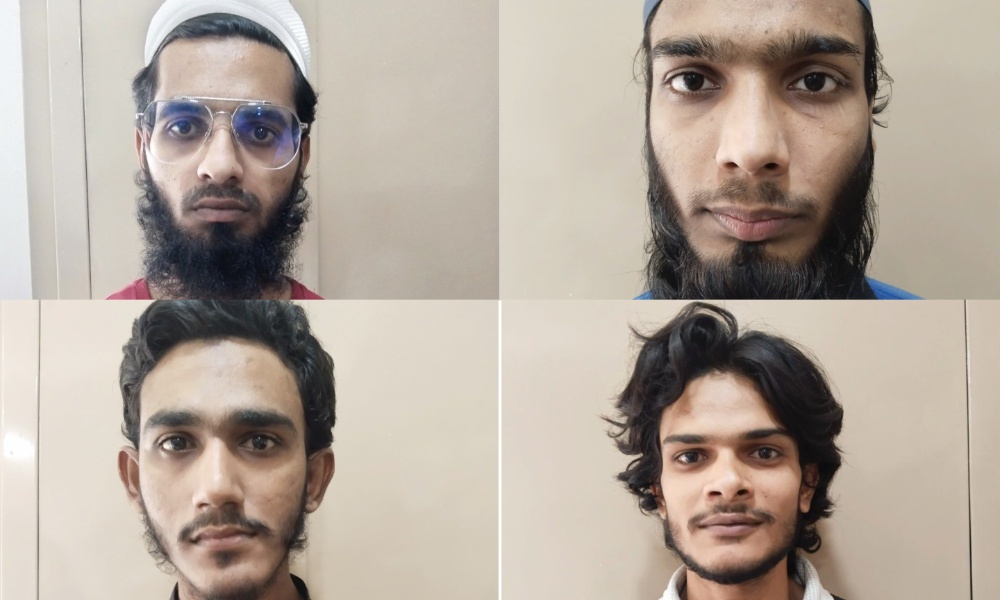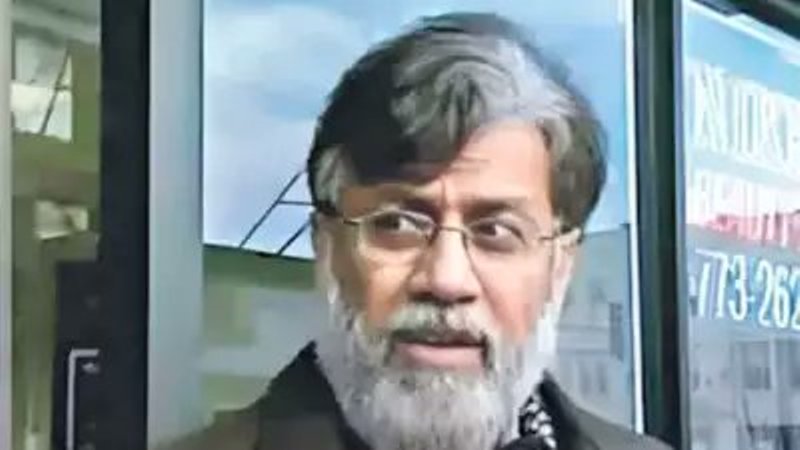A major terror module linked to Al Qaeda in the Indian Subcontinent (AQIS) has been busted in Gujarat, highlighting once again the outfit’s growing ambitions in India. Four individuals identified as Mohd Faiq, Mohd Fardeen, Sefullah Kureshi, and Zeeshan Ali were arrested by the Gujarat Anti-Terrorist Squad (ATS), reports said.

According to initial investigations, they were not only spreading the ideology of Al Qaeda but were also running a fake currency racket to raise funds for the banned terror group once led by Osama bin Laden.
Officials revealed that the arrested individuals were using applications that automatically deleted communications, making it difficult to trace their activities. The Gujarat ATS considers the busting of this network a significant success, especially since AQIS has shown keen interest in expanding its base in Gujarat.
This development also comes against the backdrop of Indian security agencies warning that Pakistan’s ISI is likely to use AQIS to increase its operations in India, particularly after the Indian Army launched Operation Sindoor in retaliation for the terror attack in Pahalgam.
AQIS, which was formed in 2014 under the leadership of Ayman Al Zawahiri, had initially planned to focus its activities across India. Its first leader in the region, Asim Umar, was of Indian origin and concentrated the group’s activities in Jammu and Kashmir, Gujarat, and the northeastern states.
The intentions of AQIS in India became clear when it issued a statement after Operation Sindoor, declaring that Indian Muslims had an obligation to launch a holy war against the so-called Bhagwa regime. The statement was seen by Indian agencies as a signal of ISI’s plan to increase AQIS’s role in India, especially while other terror groups like Jaish-e-Mohammad and Lashkar-e-Taiba take time to rebuild after strikes by the Indian Army.
ALSO READ: The Resistance Front: US designates group behind Pahalgam attack as foreign terrorist organisation
While Indian agencies believe AQIS is not as strong in manpower as it claims, its ideological influence in India appears to be greater than that of the Islamic State, Jaish-e-Mohammad, or Lashkar-e-Taiba. Many individuals continue to regard Osama bin Laden as a heroic figure, which adds to AQIS’s reach. After Asim Umar was killed, the group intensified its activities against India and even launched an Urdu magazine titled “Nawa-Ghazwatul Hind” or Voice of the Battle for India.
Al Qaeda’s interest in India dates back to the time before the 26/11 Mumbai attacks. David Headley, while planning the Mumbai attacks, had met with Ilyas Kashmiri, head of Al Qaeda’s 313 Brigade, in Pakistan.
During their meetings, they discussed possible terror strikes in Gujarat, Mumbai, and Uttar Pradesh. Headley had also scouted targets in Delhi and Pune. Tahawwur Rana, another accused in the Mumbai case and recently extradited to India, had visited cities like Ahmedabad, Delhi, Kochi, Agra, Hapur, and Mumbai. Investigators suspect that he was acting on instructions from his handlers in Pakistan. His visits were aligned with Ilyas Kashmiri’s plans to recruit youth from Kerala, Gujarat, and other states for the Ghazwa-e-Hind project.

On the same day the Gujarat module was busted, the Assam Police also uncovered a separate AQIS-linked terror module. Investigations revealed that the alleged members were in close contact with the Bangladeshi group Ansarullah Bangla Team to plan attacks in northeastern India. Originally focused on Afghanistan, Al Qaeda made a notable shift in 2020 by renaming its Urdu publication from “Nawa-i-Afghan Jihad” to “Nawa-i-Ghazwa-e-Hind”, indicating its new priority on India.
In its expansion efforts, AQIS has also recruited illegal Muslim immigrants from Bangladesh. This came to light when the National Investigation Agency (NIA) arrested 53 individuals, including Bangladesh nationals, for being part of an AQIS network.
The weakening law and order situation in Bangladesh has further complicated the issue, with most terror outfits in the country showing more loyalty to Al Qaeda than the Islamic State. Indian intelligence agencies believe that Pakistan’s ISI is using this situation to push AQIS activities along the India-Bangladesh border.
In Bangladesh, the ISI has encouraged AQIS to work closely with groups such as Jamaat-e-Islami, Hefazat-e-Islam, Hizb ut-Tahrir, and Ansarullah Bangla Team. The situation has worsened due to the lack of action by the interim head of the caretaker government, Muhammad Yunus, who has reportedly ignored these developments. This has allowed various terror outfits a free run inside Bangladesh, adding to India’s security concerns.


